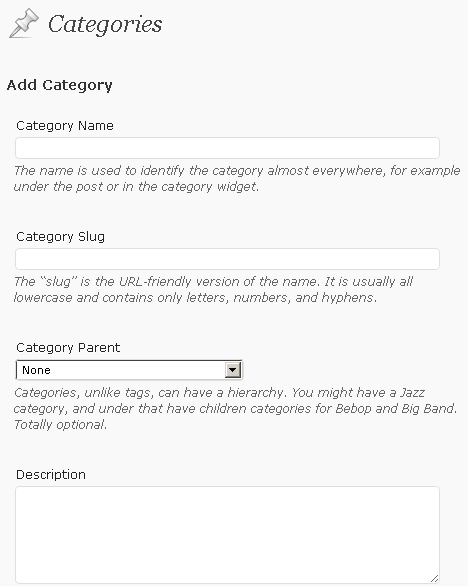
I recently returned home after an all-day meeting with a company in need of my SEO and social media marketing services. I wrote about them in my recent article titled “99 Percent of Marketing Fails, But Eleanor Can Fly!“. The company asked me to come to Chicago and meet with them at length about their needs, and get to know them. They don’t just want a consultant, they want me to share in their vision and help them to achieve some really big goals. They want my commitment to their long-term success.
We had a great time, and I learned a lot about things which make the company really great. The culture of the company is to do things with purpose. They do meaningful things and they do them for the right reasons. Their purpose is not all about the money, but the money is all because of the purpose. I suppose it is easier for them to come by their purpose, because they are a family-owned company in their fourth generation. The culture was passed down, and there is a strong sense of responsibility that comes along with that. I am still optimistic that a greater purpose can be developed in newer companies, too. They must first understand that greater rewards come from a bigger vision than themselves, and not just a clever business plan.
Tangent Thinking Creates Great SEO and Social Media
While I was meeting with these fine folks, we often spoke in tangents. We let our minds wander with our ideas. Thinking and sharing your tangent is often the best way to discover your greatest creativity. I told the guys that if I was there in the office each day, much of my best work would not be sitting at a desk and doing geeky stuff like reprogramming their websites, but rather pacing the sidewalk smoking cigarettes, and chugging coffee. I forgot to add the telephone. I need cigarettes, coffee, and a telephone so I can call for more inspiration and ideas from that perfect person in my giant network of creative and resourceful friends who can help me think through my latest flash of genius.
I explained that good SEO takes a lot of hard work, data analysis, and understanding of technologies, but that great SEO requires something a whole lot different. It requires creativity, passion, and doing something truly exceptional and showing people what makes your company amazing. Yes, SEO is a whole lot more than just picking some keywords and putting them on a perfectly crafted website. Really great SEO (search engine optimizers) know that asking for a link from other webmasters is a huge waste of time. They know that if you do something really out of the box that people love, more people will link to you because they are compelled to share the value you provided them. Yes, there I said it. I just gave you the single best tip in my SEO bag of goodies.
When the SEO Light Bulb Comes On
While I was on a tour of the company’s facility with the VP of Marketing, his right-hand man, a brilliant note-taking scribe who goes by the title of “Director of Innovation” came to re-join us on the tour. The three of us stood in the “bird cage” high atop a huge facility where employees were working hard to do their jobs. As we talked about them, it really began to feel like they were not just there to get the job done, but that the culture of this company allowed them to all be a part of a bigger picture. They worked side-by-side with family members, and I don’t just mean the strong family which is the company. They worked with people they had known since birth … you know, actual family members. Many of them had been there for a very long time. Sure, jobs are harder to find these days, but I don’t think these people came to work each day just because this was the only job out there for them. They understood the vision, and if any of them question their corporation’s intentions, they shouldn’t. I don’t. Hearing it from a guy with the founder’s same name, I can say that the higher-ups really have a whole lot of heart wrapped up in that staff. They really do care about the employees, and they feel a huge sense of responsibility to the thousands of people it can affect if they make bad decisions. It gave me goosebumps more than once.
While we stood there talking about these hard workers and sharing our visions for the company, the Director of Innovation had a moment which really came to seem like a light bulb turning on. He knew that what I do is more than just things he had read about SEO and Internet marketing, but had not put his finger on it just yet. In this light bulb moment, he really started seeing how the initial perceptions of SEO as a technical trade went a lot deeper. He noticed that it also has a lot greater than expected roots in people, talent, creativity, networking, and so many other branches of a marketing tree. It was in this conversation when he realized that there really is a lot more to the job description of search engine optimizer than he thought. It is not just about getting a bunch of website traffic. It also has a lot to do with being able to express the value of something, and doing it in a way that people can relate to. It has to do with building a brand and sharing that great culture of the company with other people who will appreciate it and benefit from it. It has to do with building consumer confidence, which often takes a lot more than just being the first search result when people search for what you offer.
Social Media Seeds SEO, But Here is How!
In our discussions, I mentioned that social media is like seeds of SEO. Actually, SEO is social media, and I will explain that briefly. If you consider that Google’s most important SEO ranking factor is quality links pointing to your website, you can see that it is all about the people’s opinion. People who have confidence in your brand, and see value in your message, will link to your work. Google is just a bigger tree in the social media forest. It reflects what the people like, and what the people want. It is largely based on the same principle of great things being popular.
There is a lot more to it, but it is the whole forest that I want you to see. Sure, you can swap a bunch of links and ask people to link to your website. If you think that works so great, consider how long it would take to get thousands of incoming links to your site by asking for them. Then consider how much more effective it would be for your business to do great things and provide great value, then present it in a way that people will love to share. Getting this wrong is why I say that most SEO fail at link building.
How Does a Good Business Become Great?
A wise man who knew about making a good business great described it as feeding the gorillas. You must give them what they want, and they want bananas. Give them bananas and they will be happy gorillas who will be loyal to you. I think there was a lot more wisdom in this than just the picture you have in your head right now of a silly man throwing bananas to a gorilla (you saw that guy in your mind, too … I know you did). It means giving people what they want in life and realizing that is the most effective path to getting what you want. This holds true, whether it is a link to your website, a purchase from a customer, love of another person, or becoming a massively successful brand. Feeding bananas to gorillas is what made the company I met with yesterday a great one. They have been giving people what they want for a long time, and the success is evident.
I really enjoyed my trip to Chicago and the day I spent getting to know these guys. I hope they see just how much similarity we share in our methods and motivations. I suspect as they read through the copies of my book, “Living in the Storm” that I left with them, they will see that I strongly believe in feeding the gorillas, too.

Mark’s Side-Note
This may seem a bit outside of the topic, but it does relate. I want to add that while I visited with my wife on my way back home, she sensed an emotional attraction that I have to this company. She said that from all I told her, I could not have dreamed up a more suitable and exciting opportunity to do the things I love than what this company has in mind for me. I was not looking for this, and I have been a CEO for two decades. The company found me, and has expressed an interest in making me an employee of their corporation. This is certainly not something I would normally even consider. At the same time, it really proves that if you do great things, with great purpose, and you present it in a way that people love, nearly any goal can become reality.
Podcast: Play in new window | Download





